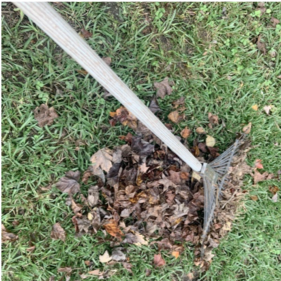Carry Over to Compost?
go.ncsu.edu/readext?748343
en Español / em Português
El inglés es el idioma de control de esta página. En la medida en que haya algún conflicto entre la traducción al inglés y la traducción, el inglés prevalece.
Al hacer clic en el enlace de traducción se activa un servicio de traducción gratuito para convertir la página al español. Al igual que con cualquier traducción por Internet, la conversión no es sensible al contexto y puede que no traduzca el texto en su significado original. NC State Extension no garantiza la exactitud del texto traducido. Por favor, tenga en cuenta que algunas aplicaciones y/o servicios pueden no funcionar como se espera cuando se traducen.
Português
Inglês é o idioma de controle desta página. Na medida que haja algum conflito entre o texto original em Inglês e a tradução, o Inglês prevalece.
Ao clicar no link de tradução, um serviço gratuito de tradução será ativado para converter a página para o Português. Como em qualquer tradução pela internet, a conversão não é sensivel ao contexto e pode não ocorrer a tradução para o significado orginal. O serviço de Extensão da Carolina do Norte (NC State Extension) não garante a exatidão do texto traduzido. Por favor, observe que algumas funções ou serviços podem não funcionar como esperado após a tradução.
English
English is the controlling language of this page. To the extent there is any conflict between the English text and the translation, English controls.
Clicking on the translation link activates a free translation service to convert the page to Spanish. As with any Internet translation, the conversion is not context-sensitive and may not translate the text to its original meaning. NC State Extension does not guarantee the accuracy of the translated text. Please note that some applications and/or services may not function as expected when translated.
Collapse ▲Leaves are changing color, leaves are falling. Now what? With a bit cooler weather and lots of benefits to being outside we all have some decisions to make about how to get our gardens and landscape investments ready for winter.
If you have an abundance of fallen leaves on your property consider raking them into a pile for composting them. Why go to the extra trouble? Soil health has  everything to do with plant health, and soil texture is a key factor, on what can and can’t occur in the root zone of plants.
everything to do with plant health, and soil texture is a key factor, on what can and can’t occur in the root zone of plants.
Quality compost is the product resulting from the controlled biological decomposition of organic material that has the unique ability to improve the chemical, physical and biological characteristics of soils or growing media. Where the plant roots interact with soil microbes, active nutrition occurs and all kinds of other good things happen that stimulate the plants. Leaves collected for compost – called “leaf mold”, allows the soil to develop an “open crumbly” structure that is more absorbent of both moisture and air. Soil in this integrated condition can better manage extreme fluctuations in temperature and allows surface water to infiltrate more easily.
If your aesthetic sensibilities need a neater arrangement than a loose pile of leaves, a simple six-foot circle of fencing will help keep your future treasure of black gold in order and compacted. Four to five feet is about the maximum height for any refuse, and 3 1/2 feet is the minimum for most shredded home compost piles. The height can be greater in cold weather than in warm weather. Place your compost bin in a flat, open space that is easily accessible but not right next to your house. Keep areas in front of and above the bin clear so you can get to it easily. Placing it in a shady area is best so it won’t dry out as quickly. Siting your bin near gardens where you will use the compost is also a good idea. As you discover the benefits of composting with leaf mold, you may want to expand and include composting other materials such as grass clippings, yard trimmings, vegetable food scraps, and coffee grounds.
The micro-organisms that recycle leaves and other plant parts benefit from a carbon to nitrogen mix (brown, dried leaves, etc. to green, grass clippings, veggie scraps, etc. ratio). They also need air and water to live and feed to break down the compost into soil. (Keep out meat, fat, bones, milk products, pet droppings, and diseased plants.) The pile can work without turning if the material has enough natural airspace from layering the brown to green components. Remember the “Chimney effect”: as the pile heats up, warm air rises upward creating a partial vacuum and, fresh air flows in to replace it. This requires airspace in the base of the pile. Compost is ready to use when it is dark brown, has a light and crumbly texture similar to potting soil, and has a pleasant, earthy scent.
With these inputs, plus time, you will have compost that will feed the soil that feeds the garden, which can feed your family.
Read more: Home Composting
Minda Daughtry is the Horticulture Agent for North Carolina Cooperative Extension in Lee County.




